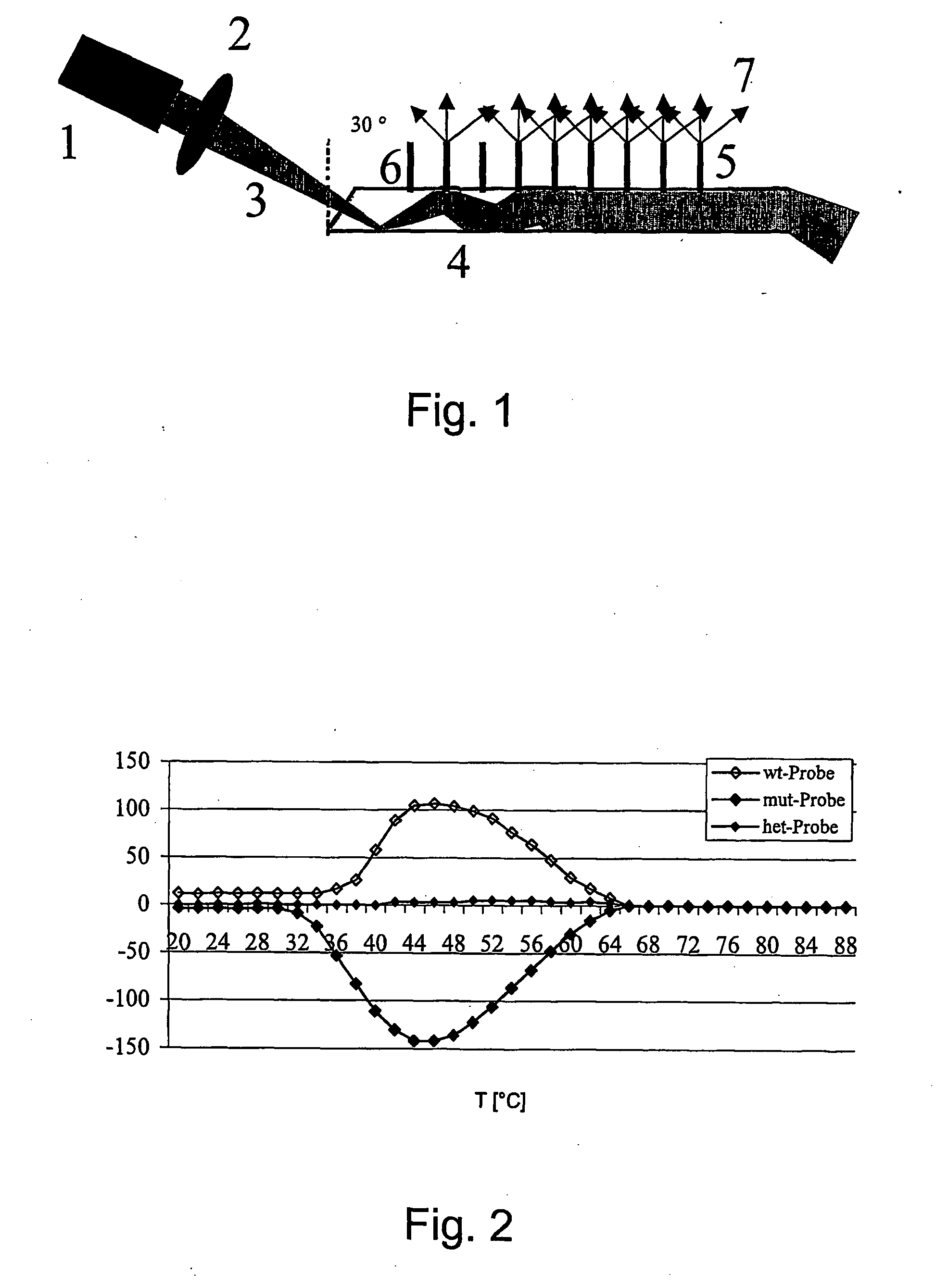Method For The Analysis Of Point Mutations
a technology of point mutations and analysis methods, applied in the field of point mutation analysis methods, can solve the problems of pcr analysis becoming difficult and expensive again, dna sequencer analysis is not so easy or at least considerably more expensive, and the gene zone cannot be analyzed in the dna sequencer
- Summary
- Abstract
- Description
- Claims
- Application Information
AI Technical Summary
Benefits of technology
Problems solved by technology
Method used
Image
Examples
examples
[0013] Detection of the H63D mutation of the hemochromatosis gene, Mutation H63D: The base exchange of a cytosine with a guanine (C→G; transversion) on position 187 in exon 2 of the HFE gene leads to an amino acid exchange of a histidine with aspartic acid on position 63 of the HFE protein. This mutation is known as H63D in the literature (Feder et al., 1996).
[0014] The H63D mutation involves a transversion, with the exchange of a cytosine with a guanine. A pyrimidine is exchanged with a purine base group in this transversion, and this leads to a steric inhibition on the site of the base mispairing. Because no bond can form in the base mispairings that occur with transversions, the mispairings are more readily detectable.
[0015] The probes for detecting the H63D mutation bear a C (wt probe) or a G (mut probe) on the central site of the specific sequence. The sample DNA bears a G (wt sample; H63D (+ / +)), a C (mut sample; H63D (− / −)) or 50% G and 50% C (het sample; H63D (+ / −)) on the...
PUM
| Property | Measurement | Unit |
|---|---|---|
| temperature | aaaaa | aaaaa |
| temperature | aaaaa | aaaaa |
| lateral angle | aaaaa | aaaaa |
Abstract
Description
Claims
Application Information
 Login to View More
Login to View More - R&D
- Intellectual Property
- Life Sciences
- Materials
- Tech Scout
- Unparalleled Data Quality
- Higher Quality Content
- 60% Fewer Hallucinations
Browse by: Latest US Patents, China's latest patents, Technical Efficacy Thesaurus, Application Domain, Technology Topic, Popular Technical Reports.
© 2025 PatSnap. All rights reserved.Legal|Privacy policy|Modern Slavery Act Transparency Statement|Sitemap|About US| Contact US: help@patsnap.com


